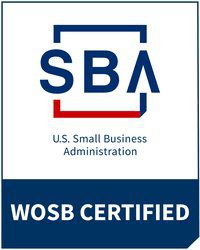Recent Posts:
- Abbexa celebrates commitment to Real Living Wage
- Abbexa to exhibit at AACR 2024
- The Journey of Alzheimer's: From Understanding to Hope
- Abbexa visits the Small Business Expo
- Abbexa visits Lab Innovations
- Abbexa Attends Cambridge University Careers Fair
- Abbexa Appoints NuLife as a Distributor in India 2023
- The Spread and Control of Avian Influenza
- Do current COVID-19 vaccines protect against brain damage?
- The Emergence of Monkeypox
The rise of single-domain antibodies in research
Posted on 2019-03-28
We’ve recently been featured in CiteAb’s article on nanobodies- but what are they and how can your research benefit?
Nanobodies are an emerging type of immune molecule discovered in camelids; llamas, alpacas, and of course camels. Also known as single-domain antibodies or sdAbs, they were first described in 1989, where an undergraduate project revealed the presence of unusually low molecular weight IgGs in dromedary camel serum. In a subsequent paper they called these IgG2 and IgG3 – not to be confused with human IgG2 and IgG3, which have very different molecular structures. Single-domain antibodies only have two heavy chains, as opposed to the two heavy and two light chains found on typical immunoglobulins.
The advantages of sdAbs are numerous; they are more stable, they require fewer amino acids to produce, they are smaller and can pass through cells more easily, and protein folding is more faithful when expressed in E. coli cells. They still have high affinity and specificity for their targets and can bind to regions within proteins that are not normally accessible to larger Igs, such as inside a binding site.
Single-domain antibodies have already been proposed and trialled as treatments for a variety of conditions. They are relatively non-immunogenic, and as they can easily inhibit proteins by occupying an active site. Caplacizumab has been approved in Europe to treat patients with acquired Thrombotic Thrombocytopoenic Purpura (aTTP); it binds to extended von Willebrand Factor polymers and prevents platelet adherence.
Perhaps the most exciting use for sdAbs is as anti-cancer agents. Preliminary experiments on various types of lymphomas and soft tissue cancers (including breast, colon, and lung cancer) have given promising results, and trials for these therapies are expected to move forward soon.
Despite all these advantages, sdAbs have not been widely accepted for use. One issue is caring for the animals themselves; while mice and rabbits (the most common sources of Igs) are relatively small and can be effectively kept in a box, camelids are substantially larger and require an open area, where they are more at risk of contracting disease. As there is currently little demand for sdAbs, many manufacturers prefer to produce standard antibodies instead, creating an environment where antibodies are preferred simply because single-domain antibodies are not available.
These, however, are temporary problems. As their popularity increases and technology moves forward, we may see the gradual replacement of standard Mouse Monoclonal and Rabbit Polyclonal antibody solutions with newer camelid equivalents.
Maybe “CLIA” will soon change to “camel-luminescent immunosorbent assay”?
Read the citeAb article here.



